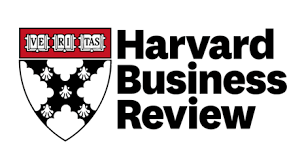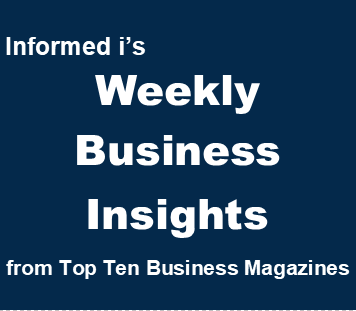
Informed i’s Weekly Business Insights
Extractive summaries and key takeaways from the articles carefully curated from TOP TEN BUSINESS MAGAZINES to promote informed business decision-making | Since 2017 | Week 387 | February 7-13, 2025 | Archive

The Power of Strategic Fit
By Darrell Rigby and Zach First | Harvard Business Review Magazine | March–April 2025
Extractive Summary of the Article | Listen
3 key takeaways from the article
- Facing heavy pressure to improve the worth of their company, many managers have turned to what we call “spreadsheet strategies.” They set financial goals sufficient to meet analysts’ expectations and then backing into ways to achieve it. That approach has established flaws. A better approach is to pursue strategic fit.
- Strategic fit is the degree of alignment and amount of synergy in a company’s business system. When a firm’s strategic fit is optimal, it creates beneficial multiplier effects among all the components of the business. Strategic fit produces a system that is nearly impossible for competitors to replicate—provided the company adapts effectively to changing conditions.
- The process of achieving strategic fit begins by identifying seven essential elements of strategy. Because they must remain aligned under ever-changing and unpredictable conditions to deliver superior performance, they should be developed concurrently and iteratively. These elements are the mental model, purpose and ambitions, stakeholders value-creation, macro forces, markets and products, competitive advantages, and the operating models.
(Copyright lies with the publisher)
Topics: Strategy, Business Model, Strategic Fit
Click for the extractive summary of the articleFacing heavy pressure to improve the worth of their company, many managers have turned to what we call “spreadsheet strategies.” They set financial goals sufficient to meet analysts’ expectations and then fill in row by row, column after column, tweaking the numbers to find a plan that appears plausible and then backing into ways to achieve it. That approach has four flaws.
First, it grants excessive credence to archaic accounting rules as the best way to measure the value of modern companies. Second, spreadsheet strategies typically extrapolate positive linear relationships ad infinitum. Third, these strategies assume that practices are interchangeable. Fourth, spreadsheet strategies divorce corporate strategy from unit operations.
Strategic fit is the degree of alignment and amount of synergy in a company’s business system. When a firm’s strategic fit is optimal, it creates beneficial multiplier effects among all the components of the business. Strategic fit produces a system that is nearly impossible for competitors to replicate—provided the company adapts effectively to changing conditions.
The process of achieving strategic fit begins by identifying seven essential elements of strategy. Because they must remain aligned under ever-changing and unpredictable conditions to deliver superior performance, they should be developed concurrently and iteratively.
- The mental model. Success hinges on understanding how a business really works and how it can capitalize on changing market conditions. Effective leaders develop mental models that approximate complex realities yet are simple enough to guide daily decisions.
- Purpose and ambitions. A company’s purpose and ambitions are intertwined. Purpose is the reason the company exists and what it aims to achieve for others, whereas ambitions are what the company hopes to accomplish for itself, including financial and operational goals. To understand the true essence of a company’s purpose and ambitions, you must look at its actions, not merely its words.
- Stakeholder value creation. The goal of stakeholder value creation is to continually increase the value that all stakeholders receive from and contribute to the business.
- Macro forces. Macro forces are inherently unstable and outside the direct control of companies. However, companies should monitor them and adapt their strategy to capitalize on emerging opportunities rather than struggle against unfavorable trends.
- Markets and products. Because complex systems are always changing, companies must constantly consider where they will do business—and where they will not. They spend significant time and money searching for the best markets for their products. But the real challenge is determining what “best” means, since markets and products that are blockbusters for one company may be flops for another.
- Competitive advantages. Competitive advantages are unique attributes or capabilities that enable a company to outperform competitors. They are crucial to the performance and long-term success of a company.
- The operating model. An operating model comprises the organization’s structure and accountabilities, governance processes and metrics, leadership and culture, talent and performance management, business processes, and technology and data. It is the organizational engine that unleashes the power of people and fuels value creation.
